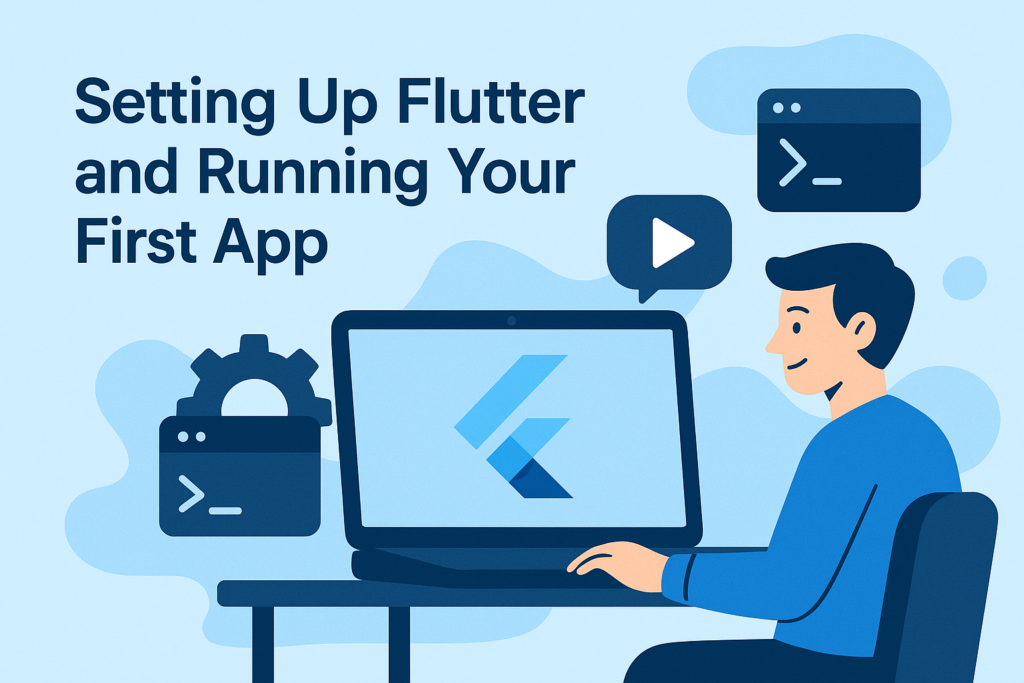
Model-View-ViewModel (MVVM) is a popular architectural pattern that helps organize Flutter applications for better maintainability and scalability. By separating concerns into three layers—Model, View, and ViewModel—MVVM ensures a clean code structure, improves testability, and enhances state management.
Why Use MVVM in Flutter?
- Separation of Concerns: Keeps UI (View) separate from business logic (ViewModel) and data (Model).
- Improves Testability: The ViewModel can be tested independently of the UI.
- Better State Management: Integrates well with Flutter’s state management solutions like Provider or Riverpod.
- Scalability: Makes the code easier to scale and maintain as the app grows.
MVVM Layers Explained
1. Model (M)
Represents the data structure and business logic. It defines how data is fetched, stored, and manipulated.
class User {
final String name;
final int age;
User({required this.name, required this.age});
}
2. ViewModel (VM)
Acts as a bridge between the View and Model. It contains the logic and exposes data to the View.
import 'package:flutter/foundation.dart';
import 'user_model.dart';
class UserViewModel extends ChangeNotifier {
User? _user;
User? get user => _user;
void loadUserData() {
_user = User(name: "John Doe", age: 25);
notifyListeners();
}
}
3. View (V)
Displays the UI and listens to changes in the ViewModel using Flutter’s state management.
import 'package:flutter/material.dart';
import 'package:provider/provider.dart';
import 'user_view_model.dart';
class UserScreen extends StatelessWidget {
@override
Widget build(BuildContext context) {
final userVM = Provider.of<UserViewModel>(context);
return Scaffold(
appBar: AppBar(title: Text("MVVM Example")),
body: Center(
child: userVM.user == null
? ElevatedButton(
onPressed: userVM.loadUserData,
child: Text("Load User"),
)
: Column(
mainAxisAlignment: MainAxisAlignment.center,
children: [
Text("Name: ${userVM.user!.name}"),
Text("Age: ${userVM.user!.age}"),
],
),
),
);
}
}
How to Integrate MVVM in a Flutter Project
Step 1: Add Dependencies
Add provider to your pubspec.yaml file:
dependencies:
flutter:
sdk: flutter
provider: ^6.0.5
Step 2: Set Up Provider in main.dart
import 'package:flutter/material.dart';
import 'package:provider/provider.dart';
import 'user_view_model.dart';
import 'user_screen.dart';
void main() {
runApp(
MultiProvider(
providers: [
ChangeNotifierProvider(create: (_) => UserViewModel()),
],
child: MyApp(),
),
);
}
class MyApp extends StatelessWidget {
@override
Widget build(BuildContext context) {
return MaterialApp(
home: UserScreen(),
);
}
}
Conclusion
MVVM in Flutter provides a structured approach to managing state and business logic.
By using Model, ViewModel, and View, you can create scalable and maintainable applications that are easier to test, debug, and extend.
The separation of concerns not only helps keep your codebase clean but also enhances the overall development experience, especially when working in teams or on larger projects.
Provider makes it easy to implement MVVM with minimal boilerplate, but other state management solutions like Riverpod or Bloc can also be integrated seamlessly depending on your project’s complexity.
Adopting MVVM early in your Flutter journey lays a solid foundation for building production-ready apps with long-term maintainability in mind.
If you’re new to architectural patterns in Flutter, you might also want to explore Flutter’s official documentation for best practices and additional guidance.



